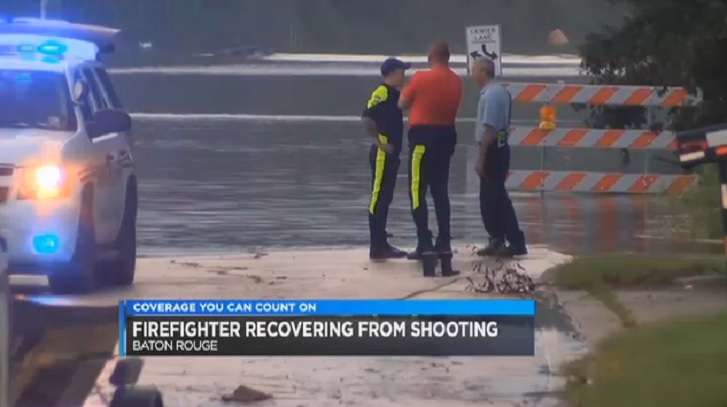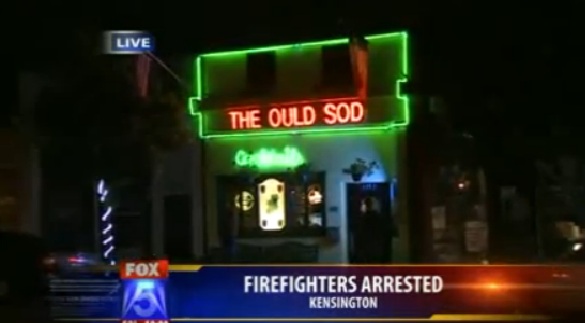40 years ago: Air Florida Flight 90 crash & Metro train derailment in Washington, DC
Looking back at January 13, 1982 and two deadly transportation collisions in the nation's capital
DCFD radio traffic from Air Florida Flight 90 and Metro crashes- Part 1, Part 2, Part 3, Part 4
Looking for a quality used fire truck? Selling one? Visit our sponsor Command Fire Apparatus
NOTE: This is adapted from my 35th anniversary post. My life since January 13, 1982 seems to have come full circle. I’m back living in the Pentagon City area with a view of the 14th Street Bridge complex and I’m regularly reporting on safety issues with Metro. One of the National Transportation Safety Board’s findings of the investigation into the fatal derailment near Federal Triangle 40-years-ago was confusion and delay in communications between Metro and the DC Fire Department, along with a chaotic situation in the Rail Operations Control Center. My reporting has shown numerous rail emergencies where communications problems between Metro and area fire departments still exist. In addition, the Washington Metrorail Safety Commission verified those delays and cited similar chaos in ROCC in recent years.
At 4:01 PM on January 13, 1982, Air Florida Flight 90 crashed into the icy Potomac River during a Washington snowstorm. Seventy-eight people, including four who were in their cars on the inbound 14th Street Bridge, died. Within a half-hour of Palm 90 going into the Potomac, the area’s subway system, Metro, suffered its first fatal collision. This happened just north of the 14th street bridge in a tunnel south of the Federal Triangle station. Three people were killed in that incident, with 25 injured.
There was a lot to learn from that day. Through the years it has impacted those in fire and EMS, the airline industry, and many others.
The National Transportation Safety Board found the failure to properly deice the plane, along with a pilot and co-pilot inexperienced in winter weather operations, contributed to the crash. The most significant factor was the crew not using the engine anti-ice system during ground operation and takeoff. This allowed the engine pressure ratio (EPR) thrust indicators to provide false high readings. Because of it, the crew did not give the plane enough power to keep the Boeing 737-200 airborne. It came down just 30 seconds after leaving the National Airport runway.
The chilling final words before the sound of impact on the cockpit voice recorder were First Officer Roger Pettit saying to Captain Larry Wheaton, “Larry, we’re going down, Larry….”. Wheaton replied, “I know!” On the first anniversary of the crash, I discovered someone in the overnight hours had placed a series of signs on the inbound 14th Street Bridge — the span hit by the tail section of the plane. The signs displayed that final cockpit conversation. It was viewed by drivers heading into work that morning until the signs were removed by a DC road crew.
The interaction of the crew and the failure of the pilot to heed warnings of his co-pilot have long been cited in the area of crew resource management. CRM is now used in aviation and other professions, including the fire service.
Another lesson for the fire service
The Air Florida and Metro crashes were important to the fire service — particularly in the Washington, DC area — for another reason. There was little cooperation or coordination that day across jurisdictional lines. On the scene of the plane crash initially — and working rather independently of each other — were the District of Columbia Fire Department, the Arlington County Fire Department and the National Airport Fire Department. In 1982 there wasn’t a strong regional plan outlining the handling of a large-scale incident. This brought much confusion on many issues. This even included determining who was in charge.
Among the loudest critics of the response was WDVM-TV Editorial Director Rich Adams. Rich, who died in 1996, was also a columnist for Firehouse Magazine and a member of the Bethesda-Chevy Chase Rescue Squad. In the days and months that followed the twin disasters, Rich did many on-air editorials prodding local fire service leaders to come up with better regional planning. Starting in the mid-1970s, the Northern Virginia fire departments had been working together daily with an automatic aid policy. But that policy stopped at the Virginia state line.
Because of Rich and some progressive fire service leaders, the lessons learned from January 13, 1982, allowed for a much better response almost two decades later when the largest and longest Washington area fire and EMS operation took place. That, of course, was at the Pentagon on September 11, 2001 — just a few thousand feet from the 14th Street Bridge.
Heroes
Most people remember that day for the dramatic video showing the rescue of the five survivors of the Air Florida Flight 90 crash. They were plucked from the icy Potomac by the US Park Police Eagle helicopter crew of pilot Donald Usher and medic Gene Windsor.
One story that wasn’t publicly known until a TV report I did during the 20th anniversary is that another US Park Police pilot likely saved the day. His actions allowed Usher and Windsor to get there in time to make those rescues.
In 1982, US Park Police did not supply a snowplow for the hanger in Anacostia Park. Pilot Ron Galey took the call alerting the helicopter crews about the crash. As Usher and Windsor got the aircraft ready, Galey jumped into his own snowplow equipped pickup. He cleared a path for the helicopter to take off. Without that Galey’s plow, Usher and Windsor may have arrived too late.
Galey also took the call from the airport’s tower notifying them that a jet had slammed into the Pentagon on September 11th.
There were several heroes that day. Arland Williams is believed to be the sixth passenger who survived the initial impact. Those passengers said Williams repeatedly passed the life ring from the helicopter to his fellow survivors. Williams drowned by the time the helicopter came back for him. The inbound 14th Street Bridge span carrying the main lanes of I-395N is named for Williams.
Another hero is Roger Olian. Olian was a sheet metal worker on his way home from his job at St. Elizabeth’s Hospital. Olian saw the survivors flailing in the frigid waters before any rescuers arrived. Feeling he had to do something, Olian jumped in and swam toward the middle of the river. While he didn’t save anyone, the survivors all cited Olian’s brave act as giving them hope they soon would be rescued.
Olian’s actions were somewhat overshadowed by Lenny Skutnik who jumped into the river a short time later. Skutnik’s actions and the other rescues were captured on video by TV cameraman Chester Panzer (watch here). Skutnik helped bring survivor Priscilla Tirado to shore. Lenny Skutnik was recognized days later during President Ronald Reagan’s State of the Union address. It began the tradition of presidents honoring heroes during that event.
A personal connection
The Wednesday afternoon Air Florida Flight 90 crashed I was home. I lived in a Pentagon City apartment a little more than a mile from the 14th Street Bridge complex. It was more than three years before my television career would begin and 10-years after my radio career started. At that moment, my broadcasting career was stalled.
I was unemployed, having been fired weeks earlier as a traffic reporter for KIX-106 Radio. The firing was over a safety issue with the traffic plane. Taking off from Woodbridge Airport one hot afternoon, we barely cleared the trees. That was due to drag caused by an under-wing electronic sign on the Cessna 172. The sign flashed messages for the sponsor of the traffic reports. My demand to get rid of the sign did not go over well with the sponsor, the ad agency or my bosses at the radio station. The sign stayed. I didn’t.
I was scheduled to have an interview for what was my best job prospect on Friday, January 15. My friend, WTOP traffic reporter Bob Marbourg, wanted the all-news radio station to use me as his vacation relief. Bob got his job at WTOP just before Thanksgiving in 1979. He was hired to replace traffic reporter Steve Thompson. Thompson, along with his pilot, were seriously injured when their traffic plane crashed in the back yard of a Vienna, Virginia home during evening rush hour. Now, another rush hour plane crash was about to start my career at WTOP.
The scanners were on in my apartment as I watched the snow fall. I heard the initial dispatch of National Airport’s fire department and alerted the WTOP newsroom. The person who answered had no idea who I was and was skeptical about what I was telling them. Somehow I got Steve Thompson on the phone. After recovering from the traffic plane crash Steve became the assistant news director and arranged my upcoming interview.
After telling Steve what I knew, I got into my car. I was able to work my way through the crowded and snowy streets of Pentagon City and Crystal City to the Twin Bridges Marriott. The hotel was located near the Virginia end of the 14th Street Bridge. With binoculars in hand, I found a top floor room with the door open and people on the balcony looking over the crash scene. The people let me in and allowed me to use the room’s phone to give WTOP its first live reports. That on-air audition replaced the job interview that was supposed to occur and WTOP immediately employed me to help cover the aftermath of the plane crash. They kept me working until I made the move to TV in 1985.
Jamie McIntyre, who later became CNN’s Pentagon correspondent, saved a story (below) he did on the first anniversary about WTOP’s coverage of the two tragic incidents. Ten-years-ago, another friend, Cindy Rich, was kind enough to interview me about that day for Washingtonian Magazine (you can read that story here).






